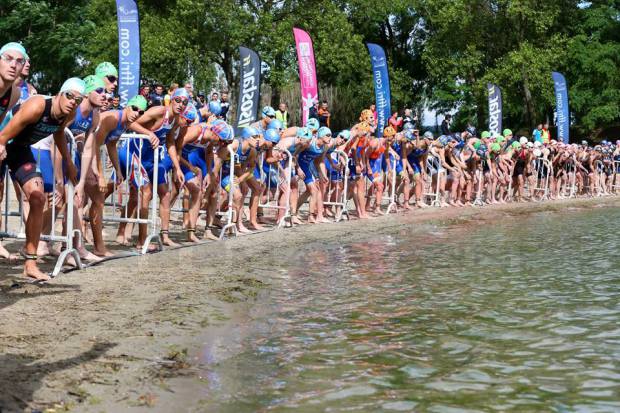 Mr. Leedham of Yellow Jersey blog fame will try and convince you that cyclocross is the only way to go once autumn arrives. For lots of cyclists and triathletes though, the end of the summer race season sees them down tools: pack up their training kit, and bed down for a well earned rest.
Mr. Leedham of Yellow Jersey blog fame will try and convince you that cyclocross is the only way to go once autumn arrives. For lots of cyclists and triathletes though, the end of the summer race season sees them down tools: pack up their training kit, and bed down for a well earned rest.
YJ MD Ryan was put through his paces by me in January and I remember explaining to him January is too late! If you want to have a good season then planning should start much earlier. In my opinion, the Autumn is the best time to identify your goals if you want to be in with a chance of meeting or exceeding your expectations.
The beginning of September is a time for reflection. Did you achieve the goals you were aiming for in 2016? If so, great. But could you have bettered those performances? If not you perhaps need to reassess your goals, or more importantly review your preparation. Is now the time to start planning for 2017?
Step 1
If you have already set your sights on next years ‘A’ race, then planning for next year should be easy. If not, the first thing you should do is find one or two goal races to focus on for next season. In this way you can focus your training to ensure that you have the correct fitness needs to meet your goals.
Step 2
Right now do something you have never likely done before, actually write down a list all your strengths and weaknesses and match this to your performance targets. It can be useful to do this from both a fitness and technical perspective. Where you are weak in key areas, this is where you should focus your attention.
Step 3
Fitness assessments can play a vital role, calculating your power threshold, riding efficiency and running economy. V02 Max sets a bench mark and helps you see if you are improving both your strengths and weaknesses.
A lot of the tests can be done yourself at home adequately or you can use the services of a professional (Shameless plug for Sportstest) but either way this should lead you to a clear understanding of your training and possibly even nutritional priorities.
Step 4
Be clear about your priorities. Many athletes confuse their priorities, spending more time, money and thought on their apparatus, rather than their bodies.
Step 5
Once you have identified both your performance goals and your training needs, you should start to think about training phases. In a training year where there is just one major goal, I would recommend a simple three phase system.
Phase 1 – Initially the training would be BASE training, to put down the underlying cardio-vascular fitness needed to carry you through the season, but in some events, this is also critical to ensure you complete the event. Typically the BASE training phase would last somewhere between 3 and 9 months, to ensure maximum developments in cardio-vascular fitness and increased riding efficiency (and of course the all-important fat burning!). One common mistake many athletes make over the winter period is that their BASE training is done at too high an intensity, or the training is done in a group scenario, and not effectively focused to their specific needs and intensity.
Phase 2 – Once the BASE phase is complete, a phase of up to 12 weeks of race pace or THRESHOLD training would be undertaken (this varies depending on the distance you are racing). This would aim to ensure you can cope with the speed demands of the event, and would also look to enhance your THRESHOLD ability (this is what allows you to maintain your pace in shorter races, or improves climbing in longer European events).
Phase 3 – The final phase to ensure you reach your chosen event in peak fitness would be a SPEED & POWER phase. This basically ensures you have the “icing on the cake”, and can cope with rapid changes in pace, or very heavy efforts of climbing short sharp hills. This phase could last anywhere up to 8 weeks depending on your race distance.
So with this in mind for any of you looking to peak for around June/July (ETU Championships or the 2016 UCI Road World Championships in Doha), you better get your kit out, because you should now be working towards building a fitness base that will ensure you meet your goals!
Dr Garry Palmer is one of the UK’s leading sports physiologists. He founded Sportstest to bring top level sports physiology expertise and understanding to anyone who exercises. If you want to see how Yellow Jersey’s Ryan got on when he went in for a Sportstest, click here.
Sportstest are currently running a promotion at their Midlands testing centre.
Book via www.sportstest.me and use the promotional code LOVEYJ to get either £30 off a bike test, or £50 off a tri test.
This is valid for any test booked in September on available dates.